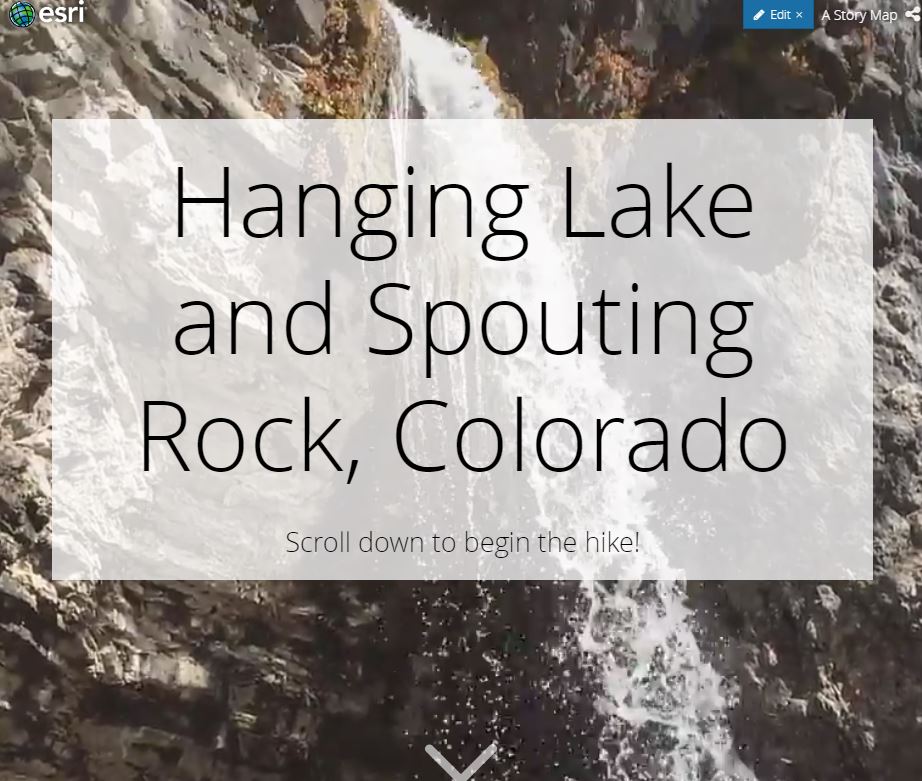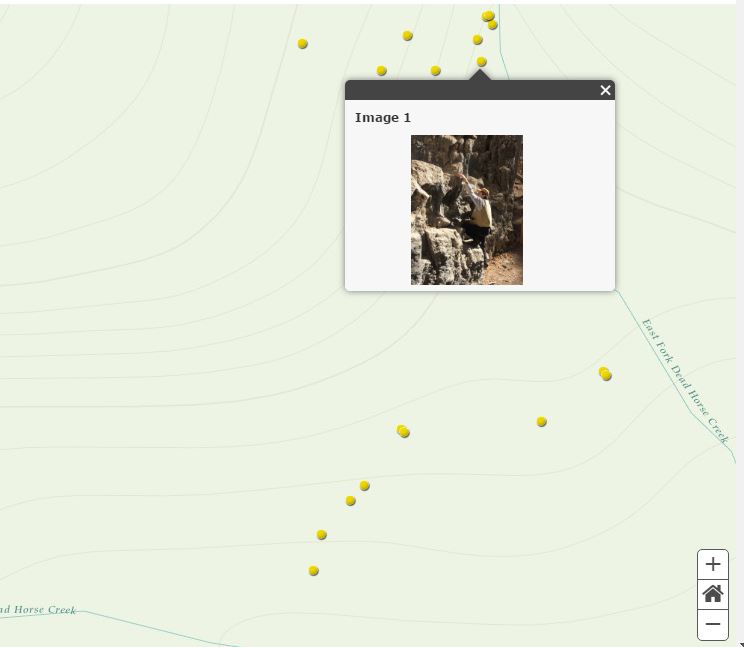- Home
- :
- All Communities
- :
- Industries
- :
- Education
- :
- Education Blog
- :
- A Story Map of Hanging Lake and Spouting Rock, Col...
A Story Map of Hanging Lake and Spouting Rock, Colorado
- Subscribe to RSS Feed
- Mark as New
- Mark as Read
- Bookmark
- Subscribe
- Printer Friendly Page
I wanted to experiment with some new capabilities in the Cascade story map app, and I thought, "Why not select one of my all-time favorite places in which to do this?". Hence, Hanging Lake and Spouting Rock, Colorado. These two physical features are unique in many ways but are also easily reached after a beautiful one-hour hike in Glenwood Canyon. Because Hanging Lake and Spouting Rock are just off Interstate Highway 70, this is one of the most popular hikes in the state, and I have been making the trek since I was 7 years old. Hanging Lake is so named because it seems to "hang" at the edge of a cliff, with waterfalls that feed it, and waterfalls that drain it. Spouting Rock is so named because the water literally gushes out of a cavity inside the cliff face, instead of flowing over the cliff as most waterfalls do. Winter brings wonderful ice formations at the cliff and at the base of Spouting Rock. My recent hike was on a beautiful Autumn day, and you can see the tree and cliff colors in the Colorado River canyon and along Dead Horse Canyon where the trail meanders. I encourage you to take this hike the next time you visit central Colorado, and I also encourage you to try these Cascade story map techniques for your own favorite place!
The results of my work are in this story map. With its "flowing" user experience, the Cascade app was the perfect tool to convey my idea of a "hiking discovery" - as you hike up the canyon, new sights are discovered around each bend. A few of the things I tried and successfully implemented were a looping video at the beginning.

Cascade story maps allow for deep narratives. In this map, I described the geology of the area, beginning with, "The geology here is largely shale, sandstone, limestone, quartzite, and dolomite, with alluvium along the river and along the sandstone bluffs. The Colorado Geologic Map is available here from the USGS, and the Geologic Map of the Shoshone Quadrangle is available for viewing here. This area is part of the Chaffee Group - Upper Devonian - Dc on the geologic map - white to buff orthoquartzite, green shale, and gray dolomite. On top of that is the Belden Formation, Lower Pennsylvanian, medium gray calcareous shale and fossiliferous limestone with interbeds of fine grained micaceous sandstone, gritstone, coaly shale, and gypsum. Also present in this area is the Sawatch Quartzite, white to buff, massive, medium grained orthoquartzite and arkosic quartz-pebble conglomerate. There is also the Leadville Limestone, gray to bluish gray, coarse to finely crystalline limestone and dolomite. The Leadville Limestone, just to the north of here, in Deep Creek Gorge, contains some of the deepest and finest caves in Colorado, all at about 10,000 feet elevation." In the map, I also gave a "shout out" to the good work that the Garfield County GIS staff does with GIS in this area to encourage what I view as some of the "unsung heroes" - those people who create the GIS data that you and I love to use.
I recorded a track with a fitness app (in my case, RunKeeper), saved it as a GPX file, and uploaded the file into ArcGIS Online, saved that map, and then pointed to that map in my Cascade story map. I was quite pleased with the spatial accuracy of the track, despite me being in a canyon with 100 meter walls and a lack of cell phone reception the majority of the time. Discussing accuracy and precision with students is something I view as fundamental GIS instruction.
I created a web map with the geo-tagged photographs that I had taken on the hike, and hence demonstrated the concept of a "map within a map", a technique that can be used quite effectively.

I embedded videos inside the story map and tested them. There was no slowing of performance after embedding these videos and so I was quite pleased with the results.
At the end, I made use of the "credits" section, indicating that all of the photographs are my own. Throughout the story map, I also indicated the source of the geologic and topographic maps I was using.
I encourage you to try the Cascade story map to tell your own story - and encourage your students to create these for their own projects, projects you assign, or from field trips in your course!
You must be a registered user to add a comment. If you've already registered, sign in. Otherwise, register and sign in.
-
Administration
80 -
Announcements
80 -
Career & Tech Ed
1 -
Curriculum-Learning Resources
259 -
Education Facilities
24 -
Events
72 -
GeoInquiries
1 -
Higher Education
598 -
Informal Education
281 -
Licensing Best Practices
93 -
National Geographic MapMaker
33 -
Pedagogy and Education Theory
226 -
Schools (K - 12)
282 -
Schools (K-12)
273 -
Spatial data
35 -
STEM
3 -
Students - Higher Education
246 -
Students - K-12 Schools
129 -
Success Stories
36 -
TeacherDesk
1 -
Tech Tips
121
- « Previous
- Next »